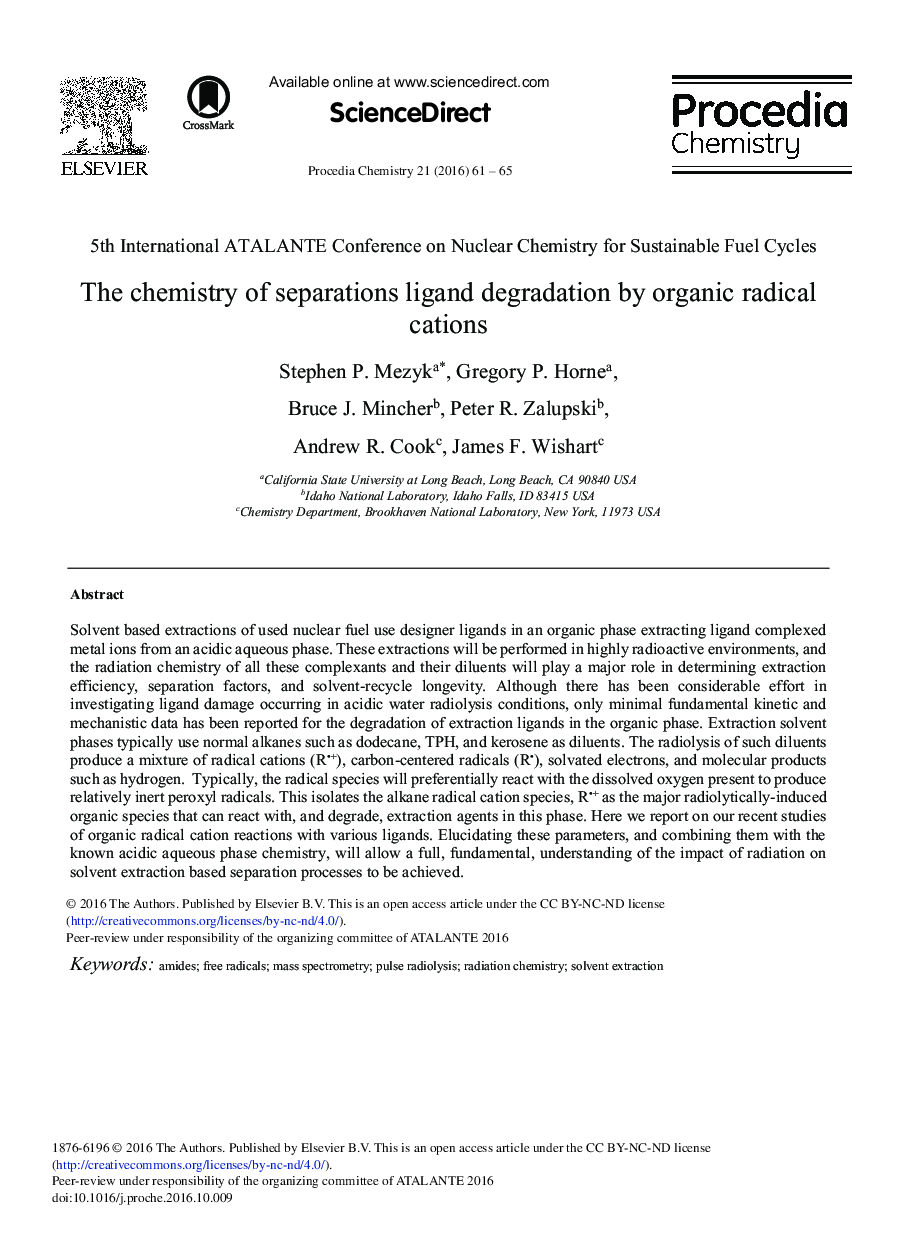| Article ID | Journal | Published Year | Pages | File Type |
|---|---|---|---|---|
| 4910910 | Procedia Chemistry | 2016 | 5 Pages |
Solvent based extractions of used nuclear fuel use designer ligands in an organic phase extracting ligand complexed metal ions from an acidic aqueous phase. These extractions will be performed in highly radioactive environments, and the radiation chemistry of all these complexants and their diluents will play a major role in determining extraction efficiency, separation factors, and solvent-recycle longevity. Although there has been considerable effort in investigating ligand damage occurring in acidic water radiolysis conditions, only minimal fundamental kinetic and mechanistic data has been reported for the degradation of extraction ligands in the organic phase. Extraction solvent phases typically use normal alkanes such as dodecane, TPH, and kerosene as diluents. The radiolysis of such diluents produce a mixture of radical cations (Râ¢+), carbon-centered radicals (Râ¢), solvated electrons, and molecular products such as hydrogen. Typically, the radical species will preferentially react with the dissolved oxygen present to produce relatively inert peroxyl radicals. This isolates the alkane radical cation species, Râ¢+ as the major radiolytically-induced organic species that can react with, and degrade, extraction agents in this phase. Here we report on our recent studies of organic radical cation reactions with various ligands. Elucidating these parameters, and combining them with the known acidic aqueous phase chemistry, will allow a full, fundamental, understanding of the impact of radiation on solvent extraction based separation processes to be achieved.
